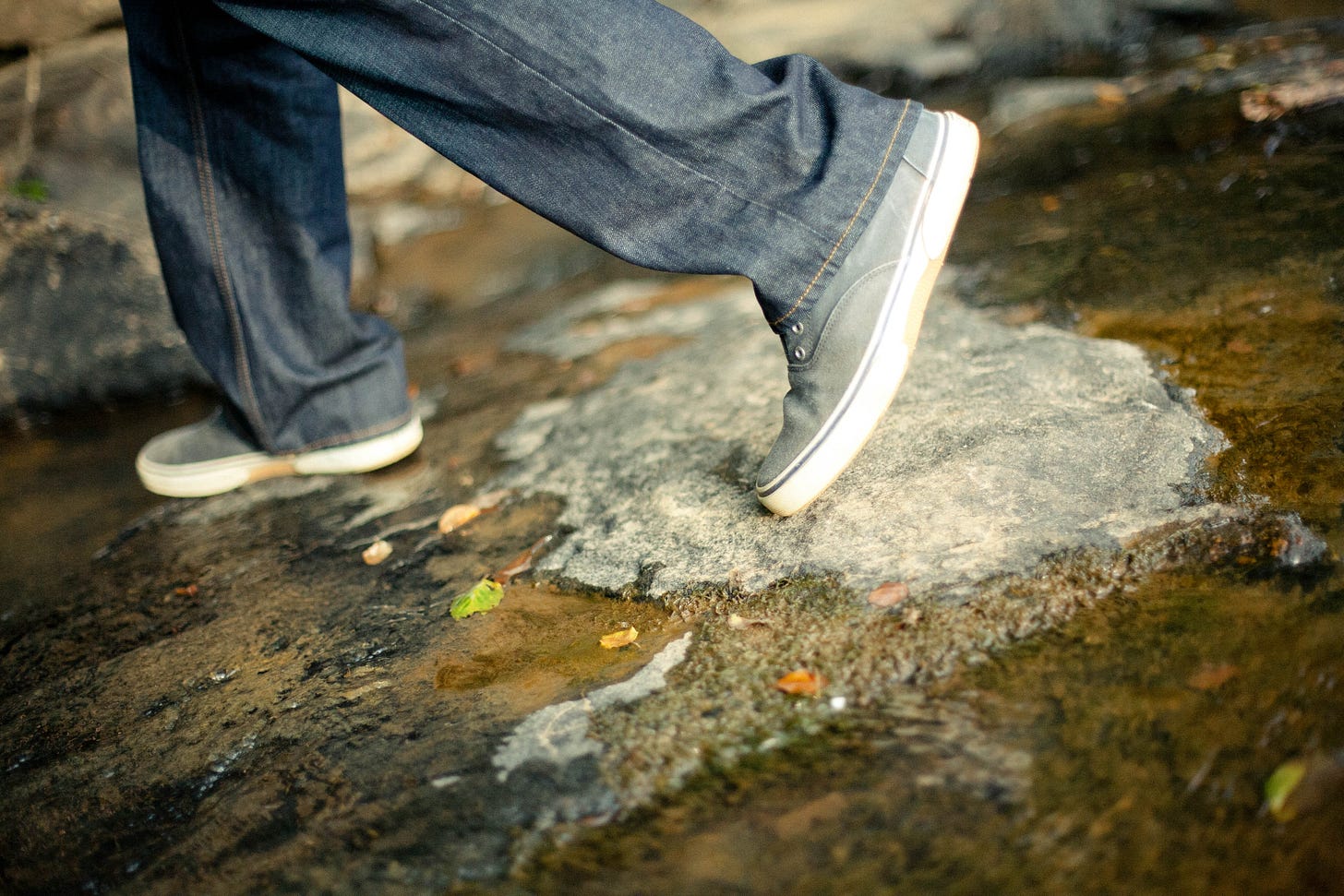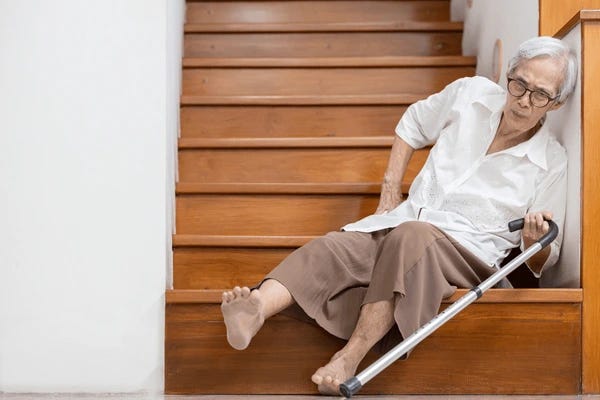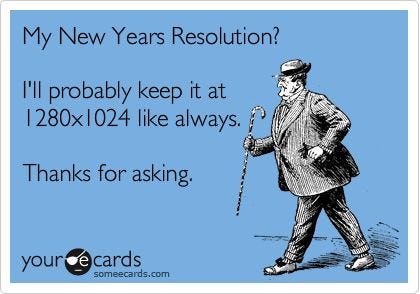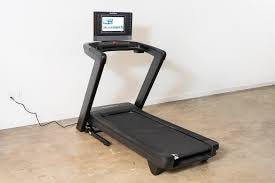I promised to walk for the rest of my life.
This entry affirms my self-promise and reminds me that I must walk today.
If you're unsure about your commitment capability, please don't promise yourself anything.
Set a goal, generate a wish, or even create a plan as an alternative. This is preferable to binding oneself to one’s word.
For example,
I enjoy writing this blog. My first entry was on January 25, 2021; as of February 2025, I’ve finished 223 entries.
I started the blog for myself (and as a client resource). I don’t track who reads it but review the overall numbers. Today, I have a couple of hundred readers. My posts have received 18 to 1,356 reads per entry.
In 2021, SUBSTACK was a small start-up service that didn’t charge a fee. Over the years, it has grown, including charging fees that I absorb as a “practice business expense.” I have six paying members, which helps.
I DID NOT MAKE A SELF-PROMISE TO KEEP WRITING THIS BLOG.
I can stop when I choose, write when I decide, edit as I want, and submit what and when I will.
I did not make a self-promise that I would keep practicing psychotherapy for XX years. This would be unwise. I want the freedom to stop when I desire. I began in 2016. I’m 68, and who knows how long I will continue.
I’ve been creating art professionally (I sell my art) since 2022.
I did NOT self-promise to be an artist for the rest of my life. I can quit when I want to.
I don’t advertise my artwork. People find it. They buy it. I suppose people appreciate its underlying meaning. http://bobbyartist.com
I did not self-promise to be a Professor my whole life. When the University framework no longer served my needs, I quit at 59. I did not retire; I am not an Emeritus Professor—I never wanted it (this would be a self-promise).
I did self-promise that I would remain married for the rest of my life, and I’ve done this now for nearly 50 years. When I stop, I will be dead, or my spouse will have died; I can’t say when this will occur, but I can say it will happen.
Nevertheless, I self-promised TO WALK REGULARLY (AS IN EXERCISE) FOR THE REST OF MY LIFE.
Has it been worth it? I’m not sure.
But, when I make a self-promise, whether worth it or not, there is a MUST attached; that is, I MUST follow through. I don’t think I will die before I stop walking, but at some point, I will either die or be so incapacitated that I won’t be able to walk.
Some walking history:
Walking for Health, June 16, 2024
Why Exercise (Part II), April 22, 2023
Why is it Hard to Exercise, August 13, 2022
I make walking simple.
Walking daily for the rest of one’s life is no simple (or easy) act.
My Strategy:
I walk only 30 minutes daily (more if I want to) except if I’m sick, hurt, or in bad weather. I never walk more than 50 minutes, even if I want to.
There is no record-keeping.
I have no goals beyond 30 minutes.
The time—approximately 30 minutes—must be set aside for walking (going up and down the stairs at home doesn’t count, going to the store doesn’t count, going back and forth to rooms in my house doesn’t count, chasing the cat around doesn’t count, etc.).
No additional exercises (or equipment) are required for walking.
Why is this hard? It’s the top New Year’s Resolution in the USA.
The first is I’m not inherently motivated to walk. It is “exercise,” and I’m not intrinsically motivated to do this.
My spouse has wanted to walk with me this year, and I welcome her. Walking is for exercise, not meditation, psychological therapy, or resolving marital issues.
I sometimes change my daily plan to walk. The time changes are daily, depending on when I can squeeze it in.
When I’m sick, I don’t walk. Recently, I had a Baker’s Cyst that took a month to resolve. I didn’t walk for a week during the cyst—it was too painful. But this is the exception, not the rule.
EQUIPMENT
Last month, my spouse said she wanted a Treadmill for walking when the weather wasn’t good. I thought about it. I said, “We’ve bought this equipment before and never used it.” She said, “I will use it.” I said, “OK, sounds good. Let’s look at KSL.com.” She said, No, Bobby, I want a brand new one. I said, “OK, let’s look for some sales.” She said, “No, Robert, I desire the best treadmill I can buy, not on sale.” I said, “OK, how much do you want to spend?” She said, “It should be the best treadmill I can buy. Are you hearing me?” I said, “Great! This will be a very high-end treadmill. No problem at all; this will be fun.” The conversation continued, and we started looking. We found one for $6,000.00, and we bought it. I did not even glance at cheaper brands; we only looked for quality and fit.
Owning a treadmill is troublesome.
My spouse is delighted, and she uses it. Walking on a treadmill is not like walking outside under your power. After a while, I noticed that it bothered my knees, so I started trying to overcome this. I’m still working on it. I hate pushing all the buttons and setting it up. I could solve this, I’m not sure why I don’t.
I’ve found that something too convenient seduces me to wait too long before I walk. I’ve walked a few times at 10 p.m. at night, which was unpleasant. I felt like I had to do it or not follow through with my self-promise, and I was in a bad mood the whole time I was walking, so I could hardly finish the 30 minutes.
It takes up space. Our home is 4000 sq ft, so there is plenty of space. The thing is ugly. It sits in the middle of an area where my art hangs, like it is an intruder. I set up a television, some weight stands (for my spouse), and other things, which take up more space.
It reminds me daily that I must walk. I know I must walk and don’t need a visual reminder.
It subtly changes my routines, and I don’t like this feeling.
What makes walking daily difficult?
My knees are deteriorating. I developed a baker’s cyst, a big nodule of fluid behind my left knee that, upon diagnosis, was due to the effects of arthritis in my knee joint that has created weaknesses to allow fluid to collect behind the knee. This painful development made walking almost impossible for one week out of a month (even walking around the house).
The Baker’s Cyst is still present. I assume it will never go away, so I walk with it.
I’m wearing a metal brace on my right knee. It holds my knee joint in place. I receive periodic knee-joint injections of slippery fluid (visco-supplementation) to reduce wear and tear.
The doctor suggested knee replacement (both knees, one at a time). “Thanks, but not for me.” The risks, disruption, and recovery curve are not worth it.
Has Walking Improved My Health?
This is hard to say.
I’ve been walking for three years. I have developed significant knee issues, likely due to arthritis. “Or,” Is this a consequence of regular walking?
My blood pressure and weight have not changed, but I haven’t tried to reduce my BP or my weight. Has walking reduced my weight? In my case, NO.
I can’t tell if I am more fit.
I’m certainly still aging, and as a result, aspects of diminished function are present.
These are consequences of living longer, not due to walking.
Do I feel better after I have walked for 30 minutes?
A qualified Yes.
I go back to an earlier entry. I feel better, most of the time, after I’ve walked. I can’t say I feel better while walking, but I understand this as a consequence of exertion.
I “believe” (see earlier entry) that having at least some activity in a daily routine helps one feel better. This is partially due to the body’s need to regulate hormones and many other dynamic features of emotion/affect associated with blood circulation and blood-oxygen exchange. Movement/activity is essential for these processes to function well—recall (or review) Bob Hill’s Theory.
Below is an abstract from the Journal of Behavioral Therapy and Experimental Psychiatry, Vol 62, 2019-80-87 with limited “empirical” data to support “Bob Hill’s Theory.”
The effects of walking posture on affective and physiological states during stress.
Seventy-three healthy adults completed baseline measures of affect, power, and sleepiness and physiological measures of blood pressure, galvanic skin response, and skin temperature. After walking in their usual posture, the same self-report and physiological measures were obtained. Participants were randomly allocated into one of two groups and asked to walk in either an upright or a slumped posture. While walking, participants underwent a psychological stressor. After experimental walking, the same self-report and physiological measures were obtained.
The upright walking posture group showed improved psychological states, including less negative affect, less sleepiness, less pain, and marginally greater feelings of power than the slumped walking posture group. Physiologically, the upright walking posture group showed lower systolic blood pressure, galvanic skin response,…than the slumped walking posture group.
WALKING INCREASES CEREBRAL BLOOD FLOW. This study documents the possible benefits of walking on cerebral blood flow and cognitive function.
Journal of Applied Physiology, 2018.
Decreased cerebrovascular blood flow and function are associated with lower cognitive functioning and increased risk of neurodegenerative diseases. Prolonged sitting impairs peripheral blood flow and function, but its effects on the cerebrovasculature are unknown.
This study explored the effect of uninterrupted sitting and breaking up sitting time on cerebrovascular blood flow and function of healthy desk workers. Fifteen participants completed, on separate days, three 4-hour conditions in a randomized order: 1) uninterrupted sitting (SIT), 2) sitting with 2-min light-intensity walking breaks every 30 min (2WALK), or 3) sitting with 8-min light-intensity walking breaks every 2 h (8WALK). At baseline and 4 hours, middle cerebral artery blood flow velocity (MCAv) and CO2 reactivity (CVR) of the MCA and carotid artery were measured. There was a significant decline in SIT compared with 2WALK but not between SIT and 8WALK. For CEREBRAL AUTOREGULATION, the change in 2WALK very low frequency phase was more than SIT. Results indicate that prolonged uninterrupted sitting in healthy desk workers reduces cerebral blood flow, which is offset when frequent short-duration walking breaks are incorporated.
This study has a very small sample size, but multiple measures are used, and walking is closely monitored in these few people. These findings have merit.
The empirical literature supports that walking is associated with better internal blood and hormone regulation. This, in turn, improves cognitive function and mood and can protect against depression and anxiety. Do you need any more evidence?
I’m not making a plea for walking, nor am I trying to prove Bob Hill’s Theory. I’m just stating facts here. I’ll let you decide what you think about the phenomenon of walking and health and my “supposed” feeling temporarily better afterward. ALTERNATIVE: It could be a placebo effect; I feel better because I fulfilled my promise. This is a reasonable explanation as well.
Enough Studies for Now.
I end this entry by affirming that I continue to walk (approximately daily) in the presence of multiple challenges, which, for now, I view as negotiable.








